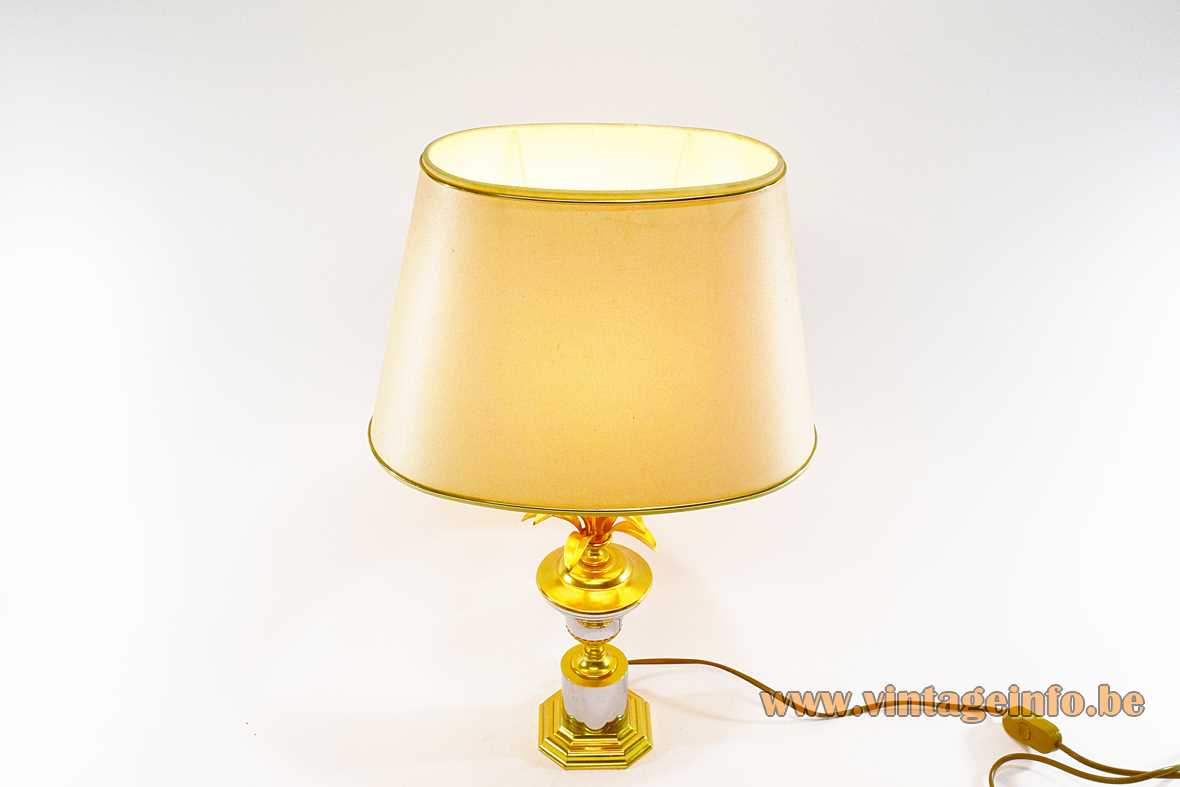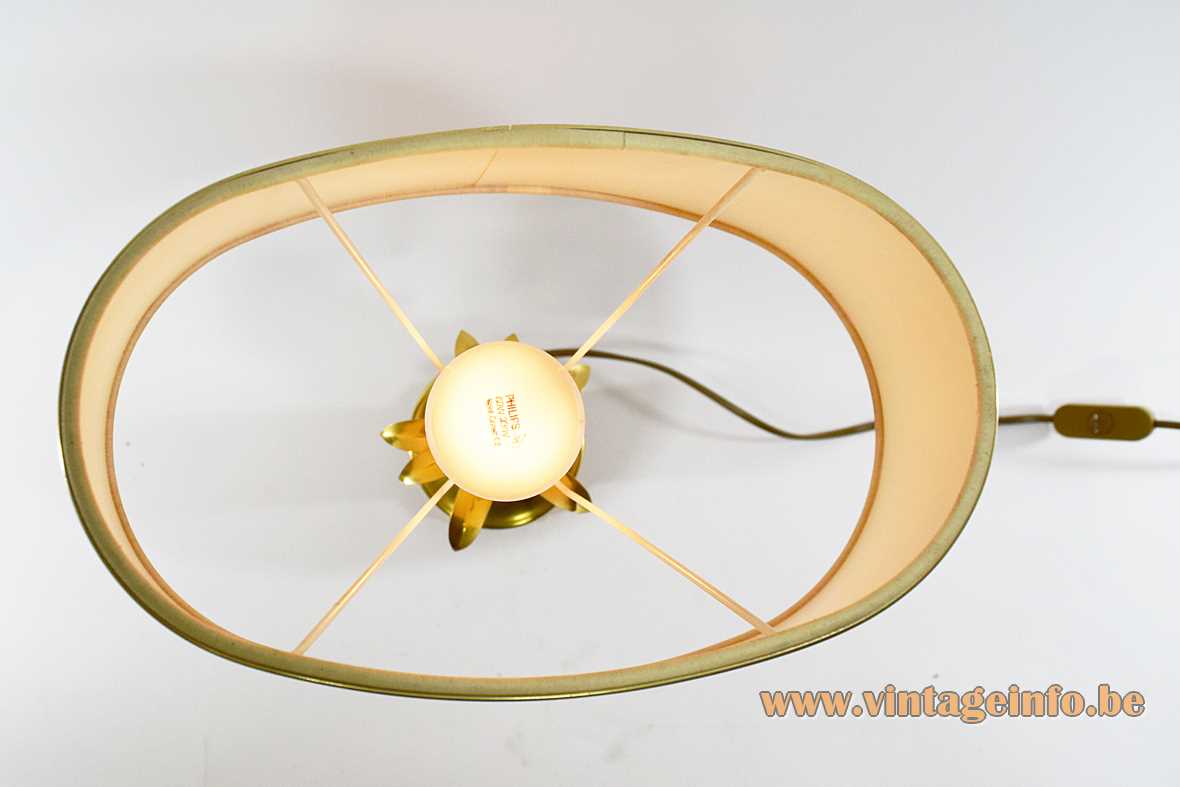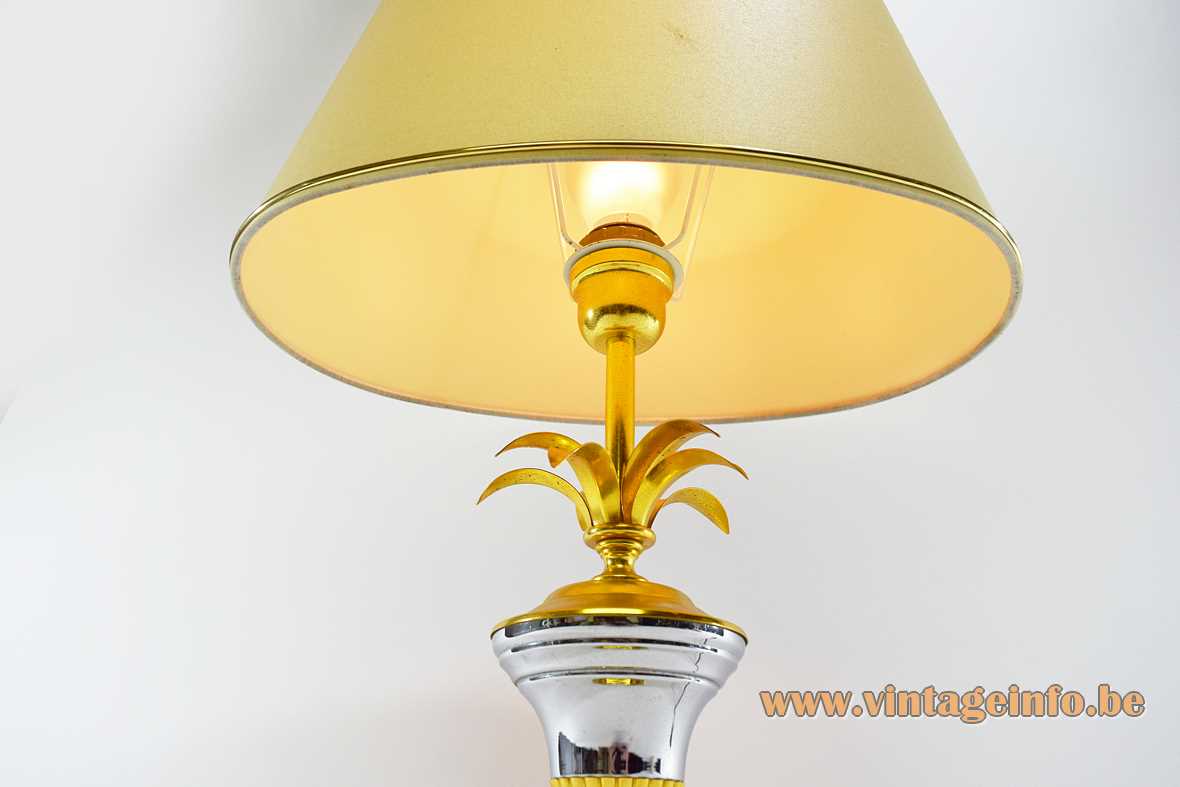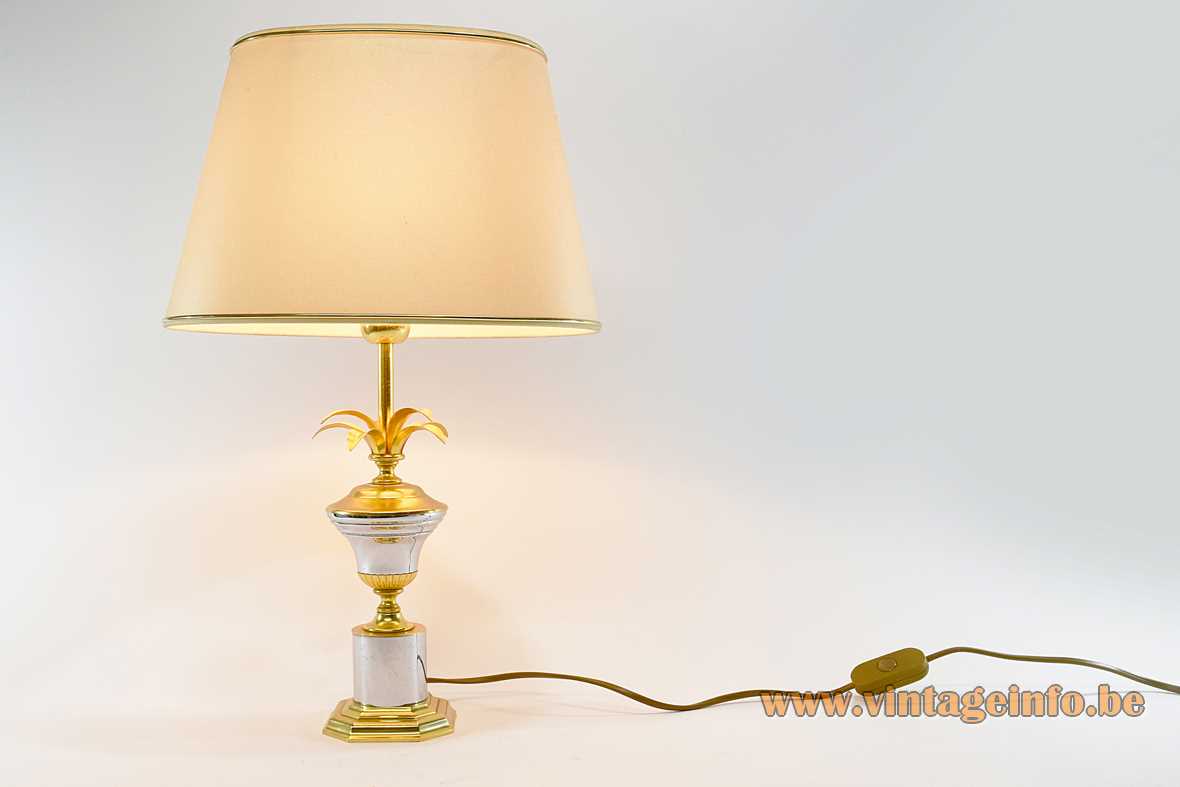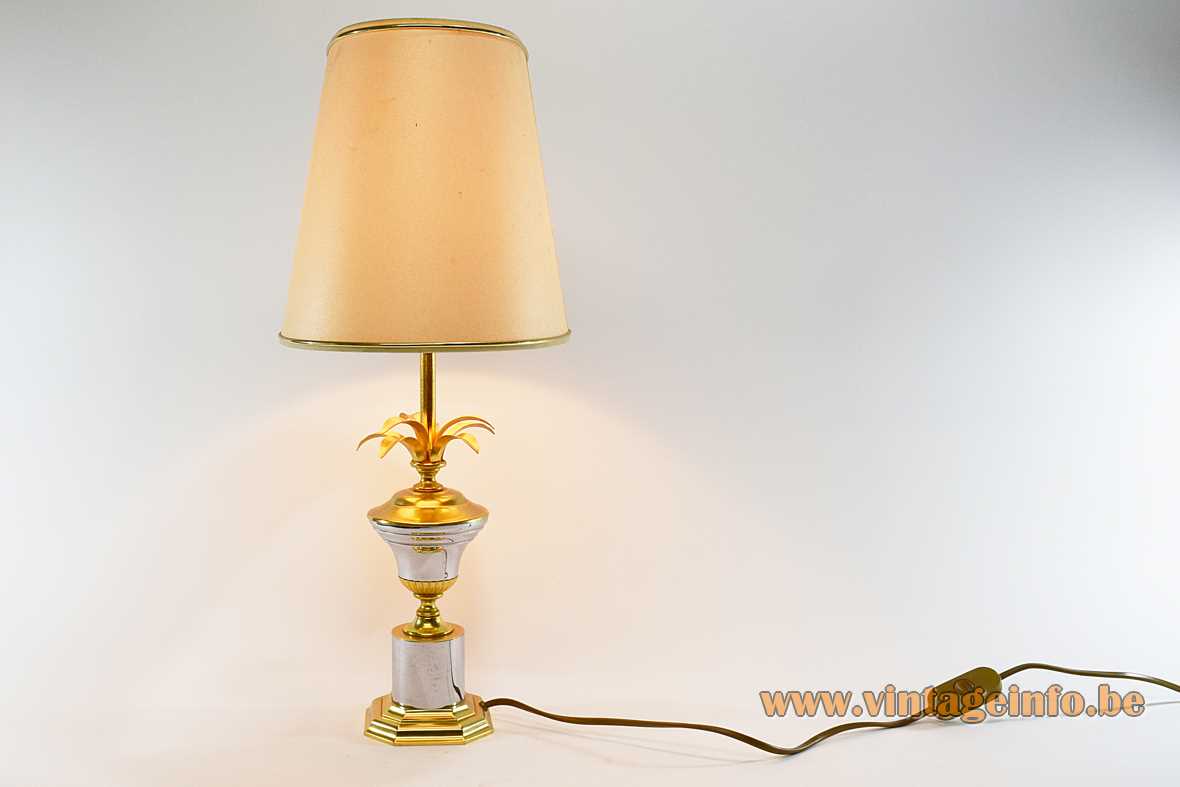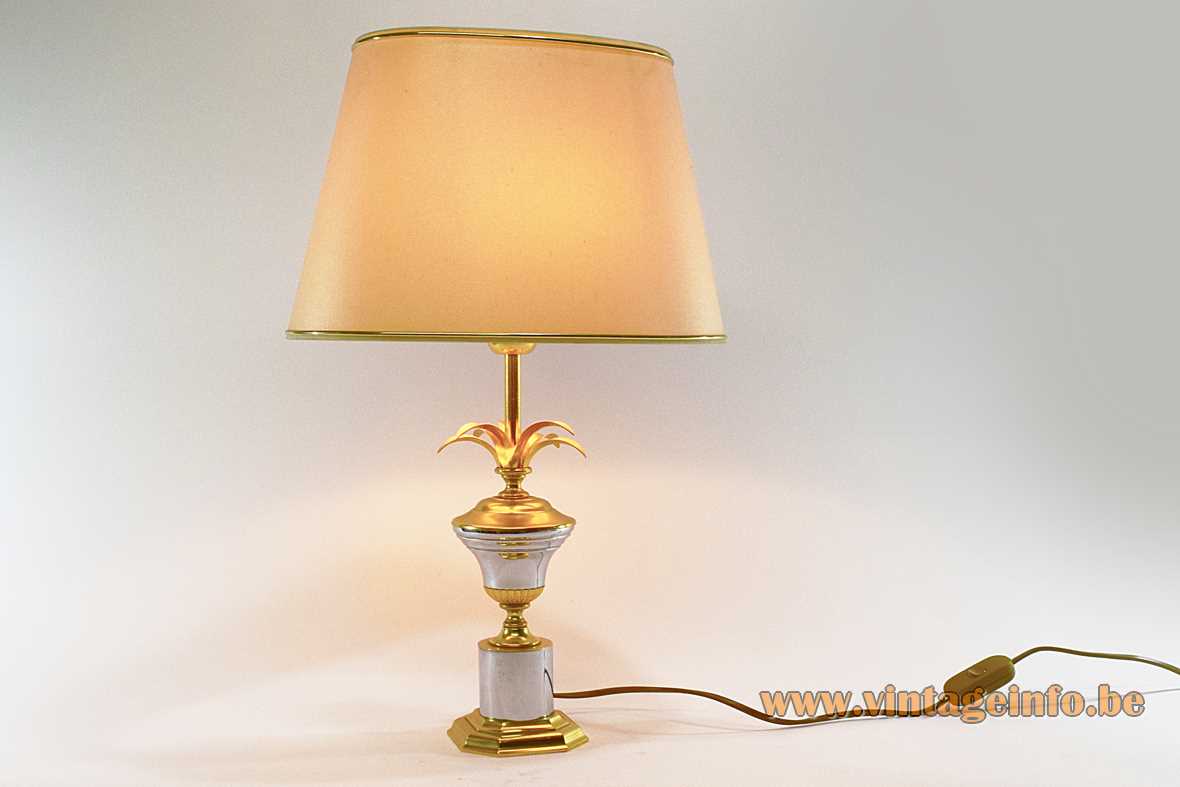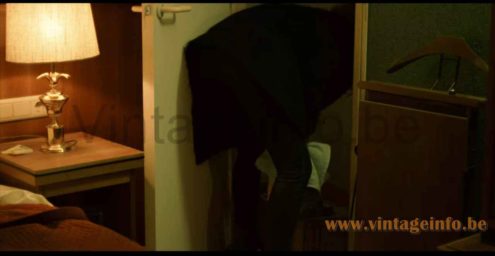1980s Palm Leaves Table Lamp
VLM Components
All the electric parts were made by VLM Components in the 1980s. The company was founded in 1945 in Buccinasco, a small village near Milan, Italy. The company became famous for the switches they produce since 1968, designed by Achille Castiglioni.
VLM is part of the Relco Group, founded in 1967. Today they are the owners of the brands Relco, Leuci, Relco Lighting, VLM Components and Segno.
Lamps in the movies
A Massive palm table lamp with a different base, but with the same leaves, was used as a prop in the 2017 Swedish crime drama TV series Hassel. Starring Ola Rapace, Aliette Opheim and Wilma Lidén. This scene is in a hotel in Brussels, Belgium. Series 1, episode 9.
Links (external links open in a new window)
Massive – Wikipedia (in Dutch)
The complete history of the Philips company
Maison Charles Paris table lamp “Vase Roseaux”
Hassel (2017) TV series – IMDb
Vintageinfo
Another Massive palm lamp with these short leaves
And another Massive palm table lamp
1980s Palm Leaves Table Lamp
Materials: Brass plated iron hexagonal base. Chromed metal tube.Chrome & brass coloured urn with palm leaves or reeds on top. Brass rod. Conical fabric lampshade. Bakelite E27 socket.
Total Height: 55 cm / 21.65”
Height: 36,5 cm / 14.37”
Lampshade: 35 x 23 cm / 13.77 x 9.05”
Base: 10,5 x 10,5 cm / 4.13 x 4.13”
Electricity: 1 bulb E27, 1 x 60 watt maximum, 110/220 volt.
Any type of light bulb can be used, not a specific one preferred.
Period: 1970s, 1980s – Hollywood Regency style.
Designer: To be appraised, probably inspired by a lamp designed by Maison Charles, Paris: “Vase Roseaux” (reeds vase) and often sold as a Maison Charles or Maison Jansen lamp. The Maison Charles table lamps always have a stamp in the metal on the back of the base with the company’s name on. The Vase Roseaux is still in production, you can find it on the website of Maison Charles. Often presented as palm lamps or urn lamps.
Manufacturer: Massive, Mortsel, Kontich and Wommelgem, Belgium.
Other versions: Massive produced many models of this 1980s palm leaves table lamp over the years. Most of them have these “short” leaves. The leaves of lamps made by the other Belgian company S.A. Boulanger have long leaves. 2 other Massive palm lamps can be found here and here. In production since the late 70s, this table lamp is from the 80s.
Massive
Origins and Early Growth (1926–1970s)
Massive started in 1926, when Pieter-Jozef De Jaeck founded a bronze foundry in Wilrijk, near Antwerp, Belgium. Initially, the company crafted traditional bronze items such as candlesticks, crucifixes, and chandeliers in-house using established casting methods.
However, as the market evolved during the 1930s and 1940s, Massive quickly adapted to meet changing consumer needs. Therefore, the company gradually introduced more functional lighting products for households. After World War II, electric lighting became more popular across Europe.
Consequently, Massive began combining classic design with modern electrical technology. This strategic shift enabled the brand to reach new customers and grow steadily.
By the 1950s, Massive had earned a solid reputation across Belgium. Its lighting fixtures – often inspired by mid-century trends – were both affordable and practical. Moreover, they were widely available in hardware and furniture stores. As a result, they became a staple in many homes.
In the 1960s, Eddy De Jaeck, the founder’s son, joined the company. He introduced semi-industrial production techniques and optimized logistics. As a result, Massive shifted from a craft-based workshop to a mass production business. This major change laid the groundwork for international expansion.
Design Approach and Product Strategy
Massive became known for producing lighting in the style of more exclusive brands. While they didn’t make direct copies, many of their designs were clearly “inspired” by well-known models. Nevertheless, the company also released some original highlights that stood out in their own right.
In addition to their own production, Massive distributed a significant number of lamps made by other manufacturers. This strategy was not unusual at the time. Many lighting companies across Europe followed the same practice to broaden their product range and appeal to a wider market.
International Expansion and Market Leadership (1970s–2000s)
During the 1970s, Massive expanded rapidly. With Eddy De Jaeck at the helm, and later his sons Piet and Jan De Jaeck, the company grew into a multinational enterprise. To stay affordable and increase volume, Massive moved production to Eastern Europe. Later, it extended manufacturing to China. This deliberate strategy helped the brand stay competitive in a changing market.
By the 1980s, Massive had become one of the top lighting brands in Europe. Its catalog included thousands of options for both indoor and outdoor use. Furthermore, the brand balanced style, affordability, and reliability. Because of this, it gained popularity in both Western and Eastern Europe.
In the Netherlands, Massive began operations in 1962. In addition, the company opened Massive Gorinchem in 1969. This location served as the Dutch headquarters for more than 40 years. Eventually, in late 2012, it relocated to Eindhoven.
Ownership Changes and the Philips Takeover (2002–2010)
In 2002, the De Jaeck family sold Massive to CVC Capital Partners for about €250 million. This move transformed the company into part of the new group, Partners in Lighting International (PLI).
Over the next years, PLI expanded quickly. For example, in 2005, the group acquired Modular Lighting Instruments. Then, in 2006, it added Trio Leuchten from Germany. As a result, PLI marketed over 10,000 products under brands like Massive, Lirio, Trio, Aqua, and Cucina.
The company grew further by employing about 5,000 people and operating in more than 70 countries. In 2007, Royal Philips Electronics announced plans to acquire PLI. The deal closed in 2008, which strengthened Philips‘ position in the European home lighting market.
Soon afterward, Philips rebranded all Massive stores in Belgium as Light Gallery. By 2014, the Massive name had vanished from packaging and store displays alike.
The End of an Era and the Move to Signify (2010–2024)
After the acquisition, Massive‘s visibility declined steadily. In 2016, Philips Lighting became a separate, publicly traded company. Then, in 2018, the company rebranded as Signify. This new identity marked a fresh focus on smart and connected lighting.
Eventually, in April 2024, Signify shut down the Light Gallery website and redirected all content to its main platform. Although the Massive name no longer appears in stores, its legacy lives on. Millions of homes throughout Europe still feature its recognizable and timeless lighting designs.
